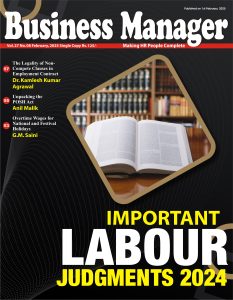This article aims to provide clarity on the difference in the meaning of ‘wages’ between The Employees’ Provident Funds and Miscellaneous Provisions Act, 1952 (EPF Act) and The Minimum Wages Act, 1948 (MW Act). These two pivotal pieces of legislation in India’s labour law framework are designed to safeguard the financial well-being of employees. The EPF Act mandates employers to contribute to a savings scheme for employees, ensuring a financial cushion upon retirement or unexpected employment disruptions. In contrast, the MW 1948 aims to prevent exploitation by stipulating the minimum remuneration employees should receive for their labour, thereby ensuring a basic standard of living. While both laws are integral to employee protection, they address different aspects of employee welfare: long-term financial security through the Provident Fund and immediate economic needs through minimum wage standards.
1) What are all the key objectives of these two legislations?
The MW Act, aims to establish and revise minimum wages in...
























